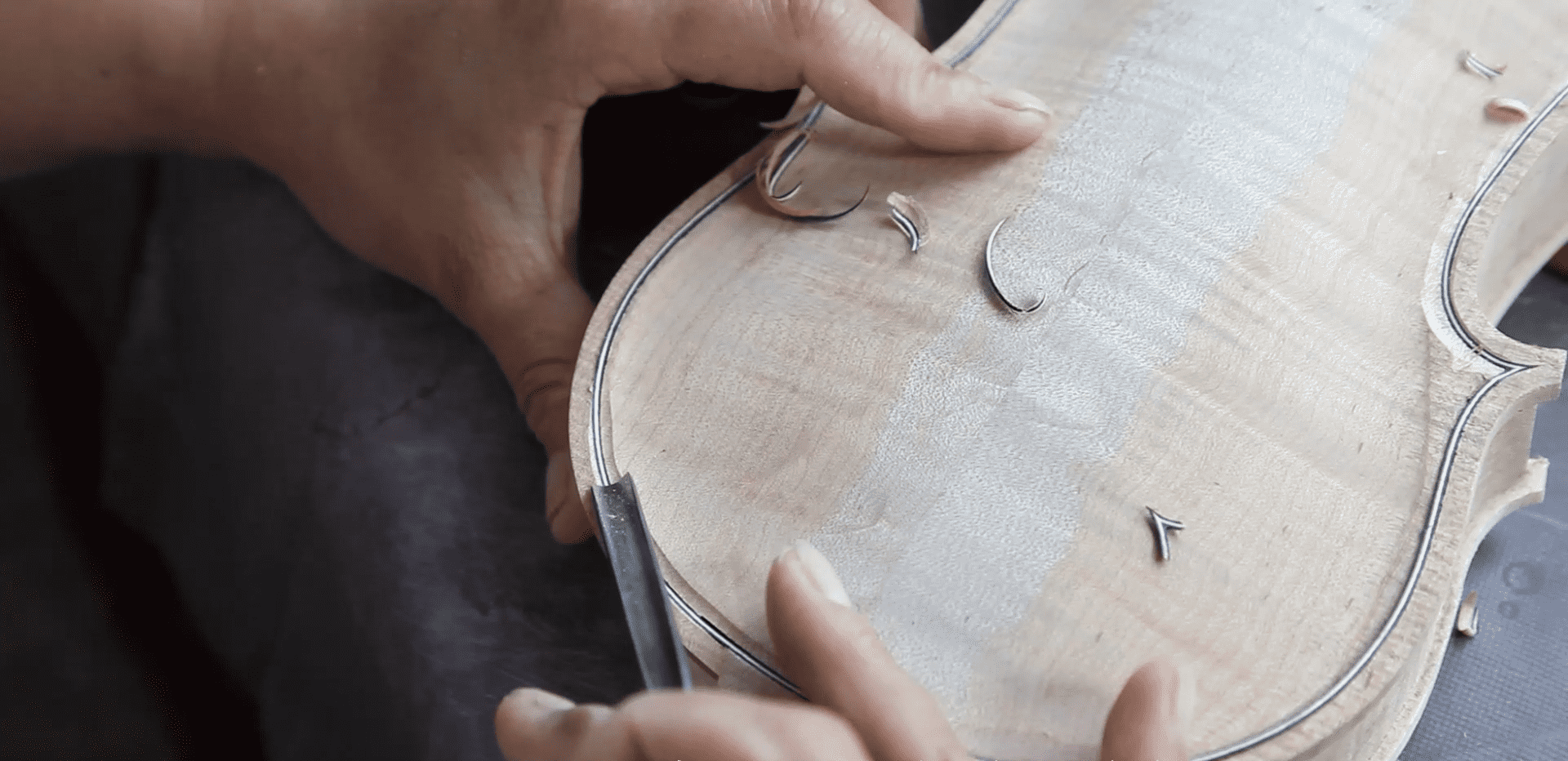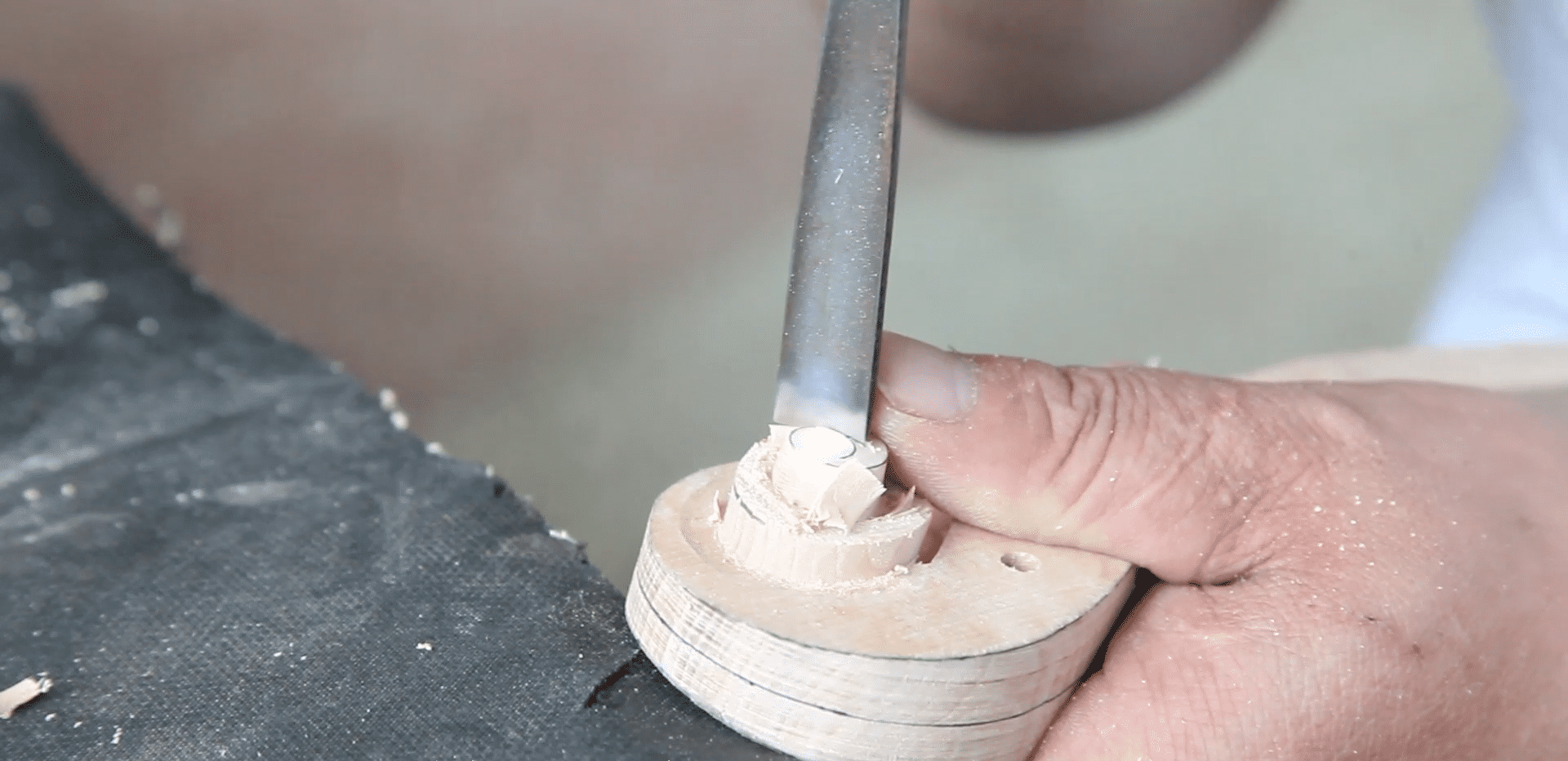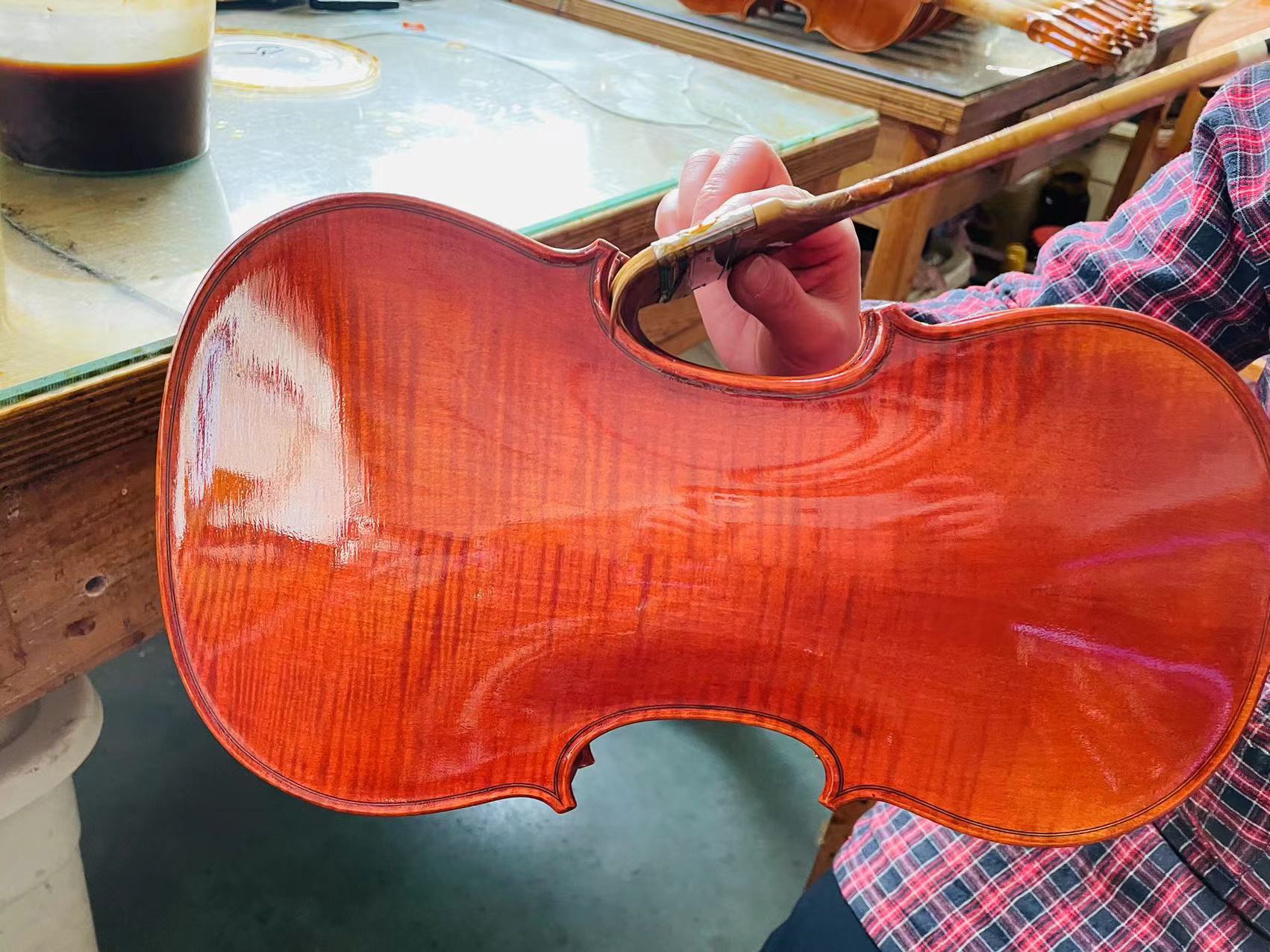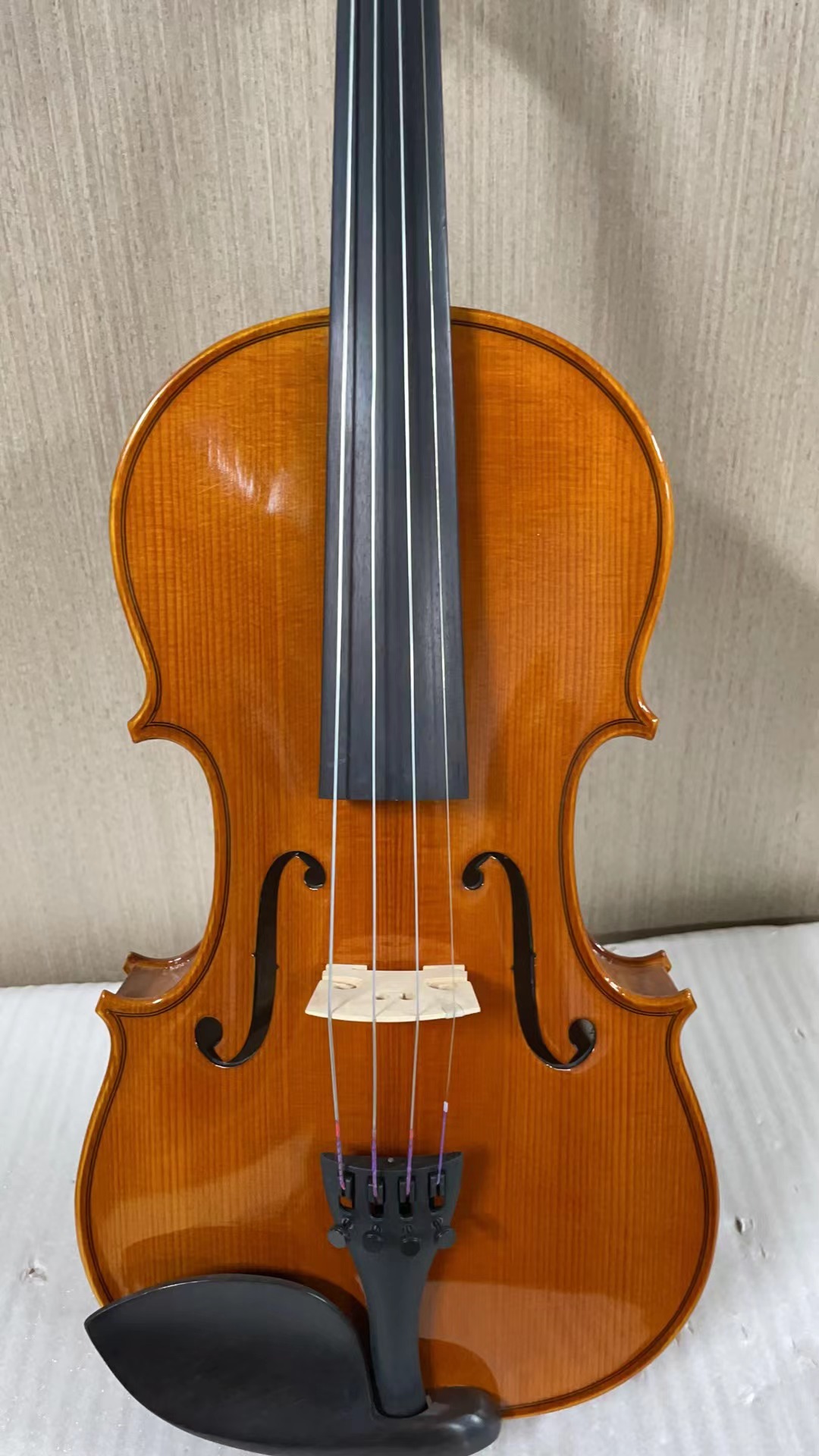Beijing Melody provides you with first-class violin, viola, bass and cello. In Beijing Melody, every process is purely handmade.
Step 6
The body is refined in appearance, including purfling, the polishing of the entire case and the finishing of the edges. After this process is completed, the body is basically shaped.

Step 7
The scroll is carved with a graver and other carving tools. This process requires a machine to polish the wood first, and then the carving is done by hand. This is relatively laborious work as it requires a certain amount of hand strength.
The scroll sits atop the violin and is carved on top of the neck. It’s called a scroll because if you turn the violin sideways, you see what resembles a rolled up piece of paper or parchment and hence, the “scroll” moniker.
This piece is decorative in the sense that it doesn’t actually contribute to sound making on the violin.


Step 8
Cut a slot in the top of the case and glue the carved scroll and the fingerboard together. This is a process requiring coordination; you have to measure each part first to ensure that there is no deviation, and the gluing must be in place, otherwise the scroll may fall off.
Step 9
Varnish has a huge impact on the appearance of the instrument, as well as on the sound quality, and we can say that this process directly determines the selling price of the instrument. But you should understand that the main purpose of varnishing is to extend the lifespan of the instrument.
Step 10
Assembly is the last step in violin making. Install and arrange the violin bridge, sound post, and then install the strings and other accessories on the violin, and finaly make adjustment. When this is done, you have a complete violin.

Post time: Oct-27-2022
